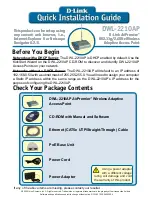
37
Remote AP-ESSID
This is the Service Set Identifier used by station to seek and connect to the
access point of same the SSID identifier.
Site Survey
Site Survey will search for the available wireless networks in range on all the
supported channels and will allow you to select one for association. In case the selected
network uses encryption, you’ll need to set security parameters in wireless security
section. Click Scan to re-scan the Access Points in range. Select the Access Point from
the list and click Close this window. Site Survey channel scan list can be modified using
the Channel Scan List control.
Rem
ote AP – Lock to MAC
Enter the MAC address of the remote access point the device is connected to. This
option will make device only connect to this access point. This is important when
connection is Point-to-Point operation.
Remote AP - Preferred MAC
Enter the preferred MAC address of the access point you want device to connect
when it first startup. Up to max of 4 MAC addresses can be entered. Priority is from top
to bottom. In the event all preferred MAC addresses are not available, device will then pick
the matching SSID access point with the strongest signal.
Country Code
Different countries have different power levels and also frequency selections. To
ensure device operation follows regulatory compliance rules, the operator should make
sure that correct country code where device will be used, is selected. The channel list,
output power limits, IEEE 802.11 and Channel Spectrum Width modes will be tuned
according to the regulations of the selected country.
Station setting must match AP
country code setting.
No Country Set:
Option when checked, only the frequency range are available.
11n 2.4GHz is 2412-2462MHz.
Wireless Profile:
NG
is 11n 2.4GHz band and represents a mixed of 802.11n, 802.11g and 802.11b mod
e.
**
Station setting must match AP Wireless Profile setting.
Channel Spectrum Width
20M represents the data transmitted at a bandwidth of 20MHz. 20/40MHz
represents the data transmitted at either 20MHz or 40MHz. In very noisy environment
it automatically fall back to 20MHz to be more resilient to the interference. In situation
when auto fall back did not happened, manually changing channel spectrum width to
















































